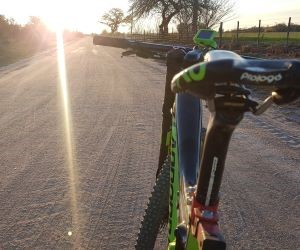Learn how to deal with punctures on long rides with prevention tips, repair techniques, and smart gear choices to keep rolling without stress.
HOW DO I PREPARE FOR MY FIRST ULTRA CYCLING EVENT?
Preparing for an ultra cycling event is more than just logging miles—it’s a comprehensive process that combines physical conditioning, gear optimization, fueling strategies, and mental resilience. Whether your first ultra is 200km, 300km, or longer, the right preparation can turn a daunting challenge into a transformative experience. This guide provides detailed, actionable steps to help you train smart, eat right, and ride with confidence.

Building a solid training foundation
Training for an ultra cycling event demands more than casual weekend rides. It requires structured endurance building, strength conditioning, and consistent progression. The goal is not just to complete long distances but to sustain energy and avoid breakdown during grueling hours on the bike.
Training volume and intensity
Your weekly training volume should gradually increase, peaking 4–6 weeks before the event. Base miles at a conversational pace form the backbone of ultra training. Layer in intervals, tempo rides, and hill repeats to build strength and efficiency. Recovery rides are equally crucial for adaptation and preventing overtraining.
Start with a strong aerobic base (long, steady rides)
Add tempo sessions to simulate sustained effort
Include strength workouts on and off the bike
Plan recovery weeks to absorb training load
Simulating event conditions
Practice rides should mirror the demands of your ultra event. If your course includes long climbs, train on hilly terrain. If it’s flat but windy, practice holding steady power in headwinds. Ride at different times of day to adapt to fatigue and varied conditions, since ultras often extend into the night.
Additionally, schedule back-to-back long rides on weekends to simulate cumulative fatigue. Learning to pedal efficiently when tired prepares your body and mind for the reality of ultra distances.
Fueling and hydration strategies
Nutrition is often called the “fourth discipline” of ultra cycling. Poor fueling can derail even the fittest rider, while a dialed-in plan can keep you energized for hundreds of kilometers. Training rides are the perfect place to test your fueling strategy and avoid surprises on race day.
Carbohydrates as primary fuel
Endurance cycling relies heavily on carbohydrates. Aim for 60–90 grams of carbs per hour during long rides. This can come from energy gels, drink mixes, bananas, or sandwiches—experiment with what your stomach tolerates best. Protein and fat play supportive roles but are harder to digest at high intensity.
Use training to test different carb sources
Avoid trying new foods on event day
Keep portable, high-density snacks accessible
Combine solid food early, gels and drinks later
Hydration and electrolytes
Hydration is more than just drinking water. Sweat loss depletes sodium, potassium, and magnesium—imbalances can lead to cramps and fatigue. Use electrolyte mixes tailored to your sweat rate, which you can measure by weighing yourself before and after long rides. The key is balancing intake with conditions: hotter days demand higher replacement.
Don’t wait until you’re thirsty to drink. Sip consistently every 10–15 minutes, and adapt fluid intake based on terrain and weather. Avoid overhydration, which can dilute electrolytes and cause hyponatremia.
Night-before and event-day nutrition
Carbohydrate loading the night before ensures glycogen stores are topped off. Stick to familiar foods, moderate fiber intake, and hydrate well. On event morning, eat a balanced breakfast with carbs, protein, and a small amount of fat 2–3 hours before the start. Once riding, switch to your fueling plan immediately r_
YOU MAY ALSO BE INTERESTED






